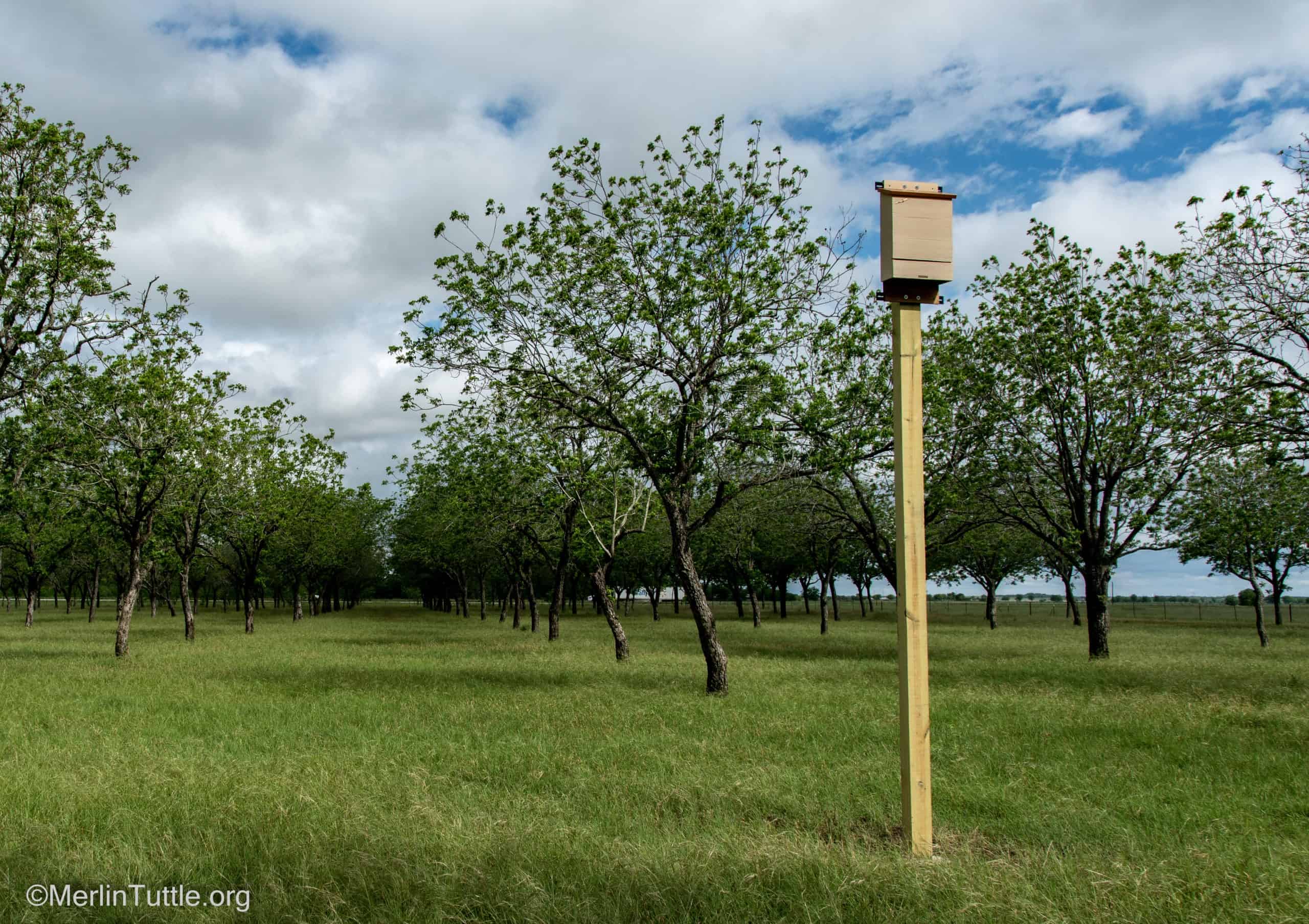Tracking the Impacts of WNS at Wisconsin’s Stonefield Historic Site
“Just like the old days, eh Heather?” Kent softly clicks his tally counter as he sits in his folding chair on the other side of
Observations of heat-stressed, sometimes dead bats associated with bat houses, have led to unfortunate speculation that bat houses can become ecological traps that lure bats to their death.
It is true that numerous bat houses are badly built and sold with unreasonable claims and little, if any, instruction on bat needs. Vendors of such houses defraud customers and threaten the credibility of bat conservation. Both vendors and customers can benefit from education and certification. Nevertheless, there is no evidence that poorly constructed bat houses threaten bat survival. Bats are smart enough to avoid bad bat houses except when desperate from lack of alternatives.
Loss of vast numbers of traditional roosts is a key cause of bat decline. Most species that occupy bat houses today originally relied on loose bark and cavities in snags that were often lost during storms. This likely explains why bats prefer to live where multiple roosting options are available.
Radio-tracking studies show that occupants of natural roosts frequently move among several, apparently to escape predators and parasites or find optimal temperatures. During severe weather, large numbers may die even in traditional roosts. With so few remaining, bats often fail to find ideal homes.
When providing bat houses, the best way to reduce mortality is to offer a variety of roosting options. Several houses ideally should be colored, positioned, or vented to provide a range of temperature. Needs vary between cool versus hot weather extremes.
Selecting a quality bat house, as well as proper placement, are crucial to success. In our forthcoming book, Danielle Cordani and I will provide plans for houses that maximally meet bat needs over a wide range of temperature. However, a single house is unlikely to prove ideal for all species and locations.
Where sufficient habitat exists, especially within easy reach of overwintering locations, available houses often become crowded, and growing numbers of young may perish for lack of available space. The same occurs at traditional roosts. We simply don’t see it. And we can’t prevent it, though careful monitoring and providing more bat house options can help.

Love our content? Support us by sharing it!
“Just like the old days, eh Heather?” Kent softly clicks his tally counter as he sits in his folding chair on the other side of
It’s summertime (in the Northern Hemisphere) and the evening skies are alive with activity. As the sun sets, bugs are flying around and bats are
How hot is too hot? When it comes to bats and their ideal roosting temperatures, striking the right balance is crucial. We know that bats
Thirty-six attendees from eight states attended our second annual “Join the Nightlife” workshop, a unique collaboration organized by Merlin Tuttle’s Bat Conservation (MTBC), in partnership
2024 © Merlin Tuttle’s Bat Conservation. All rights reserved.
Madelline Mathis has a degree in environmental studies from Rollins College and a passion for wildlife conservation. She is an outstanding nature photographer who has worked extensively with Merlin and other MTBC staff studying and photographing bats in Mozambique, Cuba, Costa Rica, and Texas. Following college graduation, she was employed as an environmental specialist for the Florida Department of Environmental Protection. She subsequently founded the Florida chapter of the International DarkSky Association and currently serves on the board of DarkSky Texas. She also serves on the board of Houston Wilderness and was appointed to the Austin Water Resource Community Planning Task Force.
Michael Lazari Karapetian has over twenty years of investment management experience. He has a degree in business management, is a certified NBA agent, and gained early experience as a money manager for the Bank of America where he established model portfolios for high-net-worth clients. In 2003 he founded Lazari Capital Management, Inc. and Lazari Asset Management, Inc. He is President and CIO of both and manages over a half a billion in assets. In his personal time he champions philanthropic causes. He serves on the board of Moravian College and has a strong affinity for wildlife, both funding and volunteering on behalf of endangered species.